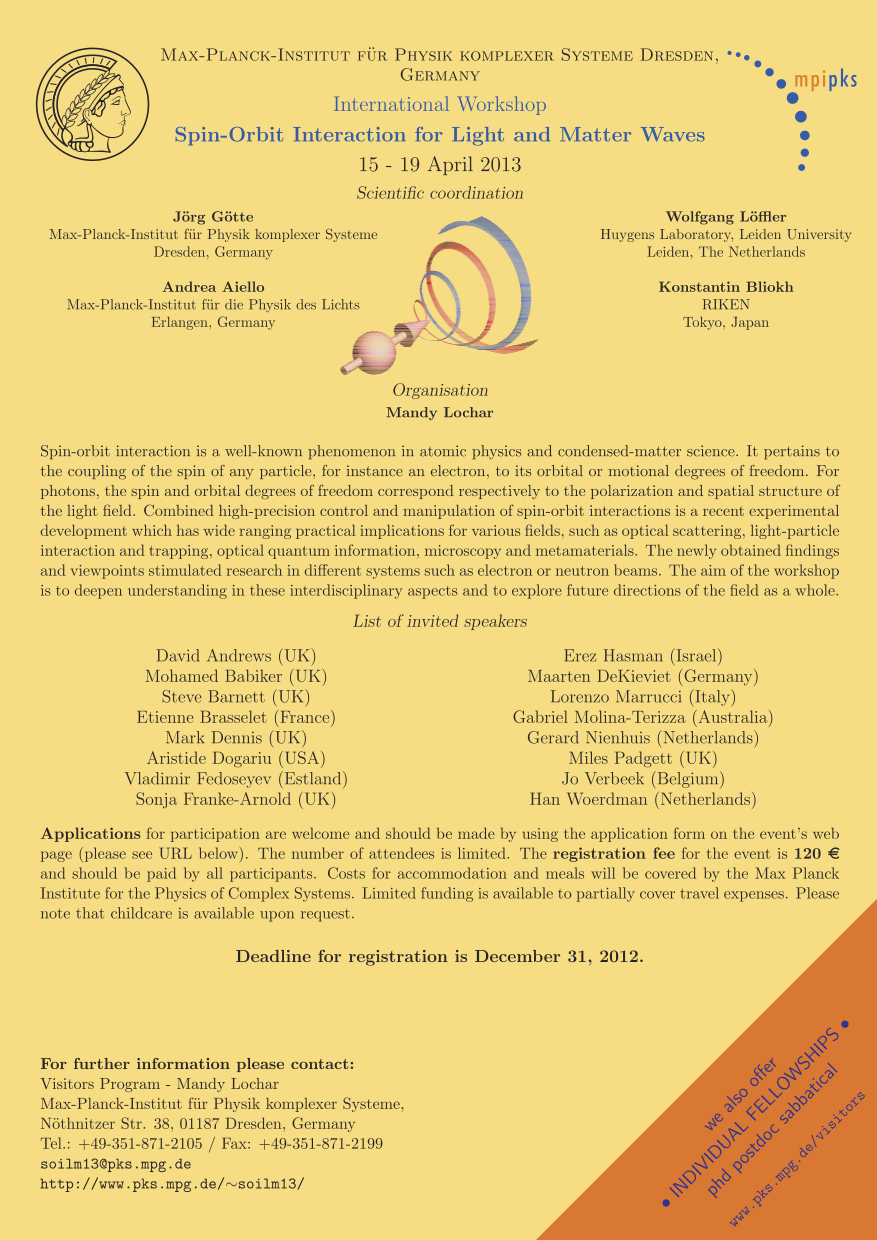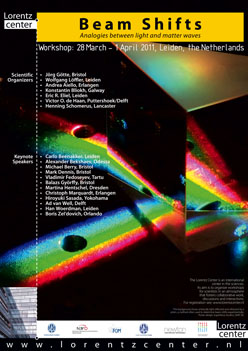Workshops
Structures in confined light
22 - 25 March 2020 720th Wilhelm und Else Heraeus Seminar, Physikzentrum Bad Honnef, Germany confinedlight.net Organisation: Peter Banzer, Ilja Gerhardt and Jörg Götte
The ability to shape light has revolutionized imaging, optical trapping and both quantum and classical communication. The simultaneous control over both spatio-temporal intensity and polarization structures requires new approaches to optical devices such as meta-materials and -surfaces while at the same time the handedness of structured light lends itself to imaging, probing and manipulating the geometry and potentially chirality of matter. In addition, the generation, propagation and interaction of structured light with matter is governed by topological invariants and conservation laws, which add a complex mathematical component to this exciting and interdisciplinary field.
This is why we will bring together both young scientists and established, world leading experts from different areas such as mathematical optics, chemistry, microscopy, material science and biomedical physics.
Interactions between twisted light and particles
27 March 2015 Fachübergreifendes Symposium bei der Frühjarstagung der DPG in Heidelberg, Germany Symposien Heidelberg Organisation: Jörg Götte, Stephan Fritzsche and Sonja Franke-Arnold
In addition to spin, beams of light can carry orbital angular momentum owing to a twist in their phase structure. Remarkably, the same twisted phase fronts can also be imprinted on free electrons, which naturally have a spin. Twisted electrons and light can be made to interact with each other and with quantum matter, opening new research directions about the role of angular momentum transfer between localised light fields and particles, such as electrons, atoms and molecules.
The aim of this symposium is to explore the connections across quantum and electron optics as well as atomic physics in the field of angular momentum of localised field, raising new questions about light matter interaction based on both spin and orbital angular momentum.
Spin-Orbit interaction for light and matter waves
15 - 19 April 2013 Max Planck Institute for the Physics of Complex Systems, Dresden, Germany www.pks.mpg.de/~soilm13 Organisation: Jörg Götte, Wolfgang Löffler, Andrea Aiello and Konstantin Bliokh
Spin-orbit interaction is a well-known phenomenon in atomic physics and condensed-matter science. It pertains to the coupling of the spin of any particle, for instance an electron, to its orbital or motional degrees of freedom. For photons, the spin and orbital degrees of freedom correspond respectively to the polarization and spatial structure of the light field. Combined high-precision control and manipulation of spin-orbit interactions is a recent experimental development which has wide ranging practical implications for various fields, such as optical scattering, light-particle interaction and trapping, optical quantum information, microscopy and metamaterials. The newly obtained findings and viewpoints stimulated research in different systems such as electron or neutron beams.
Beam shifts: Analogies for light and matter waves
28 March - 1 April 2011 Lorentz Center, Leiden, The Netherlands www.lorentzcenter.nl Organisation: Jörg Götte, Wolfgang Löffler, Andrea Aiello, Konstantin Bliok, Eric Eliel, Victor de Hahn and Henning Schomerus
This Lorentz Workshop aims to explore the analogies in transport phenomena across optics, condensed matter and particle physics. Two prominent examples where such analogies exist are the Goos-Hänchen shift and the spin Hall effect. Both have recently attracted much attention across different areas of physics. The former is a spatial, longitudinal shift of a finite-width optical beam on reflection and has first been observed in total internal reflection. In conditions when quantum effects are significant, a similar effect has been found for wavepackets representing beams of electrons, neutrons, and cold atoms. In this latter case of Schrödinger and Dirac waves, a sharp potential difference replaces the dielectric interface causing optical reflection. The exact nature of the shift depends on internal degrees of freedom, such as the spin of particles. Similarly, in optics the shift changes from longitudinal to transverse for light with spin angular momentum, that is circular polarization.

